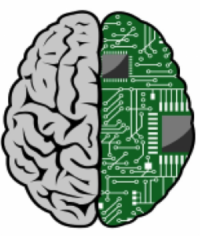Physical Human-Robot Interaction:
Recent developments strive for realizing robotic systems that not only interact but closely collaborate with humans in performing everyday manipulation tasks. Successful collaboration requires the integration of the individual partner’s intentions into a shared action plan, which may involve a continuous negotiation of intentions. The proposed project aims to understand the underlying processes of negotiation in a jointly executed kinesthetic task. Specifically, we explore the strategies that can be used to integrate individual motion and force inputs from the members of the human-robot team, to achieve the joint task goal. The research plan for this proposal consists of three main objectives: (1) designing an interface that allows bi-directional negotiation of intent between human and robot, (2) quantifying the behaviors of the human operators in terms of (changes in) adopted roles (i.e., leader and follower) and the levels of control authority, and (3) developing control strategies that support negotiation and a human operator finds it safe, natural, and pleasing to work with. We hypothesize by implementing the models developed in this proposal a human-automation team will be able to negotiate their intention and reach a shared decision as “natural” and “smooth” as a human-human team.
Heterogeneous Traffic Systems:
The penetration of vehicles equipped with wireless communication is expected to increase the demand for data-based models for heterogeneous traffic networks, where heterogeneity originates from the differences in human behavior, vehicle properties, and level of autonomy. Specifically, since automated vehicles can perform with less spacing and headway compared with manual vehicles or mixed traffic, it is essential to understand to what extent autonomous vehicles can improve the mobility of a traffic network for different levels of penetration rates. The goals of this research are to model and control a non-signalized heterogeneous traffic network to maximize the performance (in terms of mobility) and minimize the variation in the traffic flow for different levels of heterogeneity. This research addresses the heterogeneity in terms of different levels of autonomy (autonomous vs. human-driven vehicles), (ii) vehicle dynamics and size (cars vs. trucks), (iii) road conditions (multi-lanes or moving bottlenecks), and (iv) operational behavior (aggressive vs. conservative).





